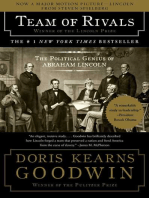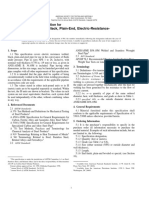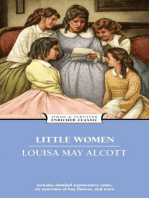0 ratings0% found this document useful (0 votes)
106 viewsA800
A800
Uploaded by
Production DepartmentCopyright:
© All Rights Reserved
Available Formats
Download as PDF or read online from Scribd
A800
A800
Uploaded by
Production Department0 ratings0% found this document useful (0 votes)
106 views6 pagesCopyright
© © All Rights Reserved
Available Formats
PDF or read online from Scribd
Share this document
Did you find this document useful?
Is this content inappropriate?
Copyright:
© All Rights Reserved
Available Formats
Download as PDF or read online from Scribd
Download as pdf
0 ratings0% found this document useful (0 votes)
106 views6 pagesA800
A800
Uploaded by
Production DepartmentCopyright:
© All Rights Reserved
Available Formats
Download as PDF or read online from Scribd
Download as pdf
You are on page 1of 6
Designation: A 800/A800M ~ 91 (Reapproved 1997)*'
tonne hrs Soe St Sandor Copa AST
afl
Standard Practice for
Steel Casting, Austenitic Alloy, Estimating Ferrite Content
Thereof!
This stn sists under theFines deigation A SDWAEOOM; the nore mney alow the dspnation ides the ear
‘of enigial adoption ain he ese o evisu he yer of an evn, A suber parentheses ies the year of ls reopyrvel
‘Aspen ep 6) adktes an dol change sins heat von or rappona
1. Scope
J.1 This practice covers procedures and definitions. for
estimating ferrite content in certain grades of austenitic iron-
chromium-nickel alloy castings that have compositions bal-
anced to ereate the formation of ferrite as a second phase in
amounts controled to be within specified limits. Methods are
described for estimating ferrite content by chemical, magnetic,
and metallographic means.
1.2 The grades covered by this practice are: CP-3, CR-3A.
CE-8, CF-8A, CF-3M, CF-3MA, CFM, CE-8C, CG-8M, and
CHAO.
1.3 The values stated in either inch-pound units or SI its
are fo be regarded separately as standard. Within the Cex, the
SI units are shown in brackets. Tho values stated in each
system are not exact equivalents; therefore, each system must
be used independently of the other. Combining values from the
too systems may result in nonconformance with the practice
14 This standard does not purport to address the safety
problems, if any, associated with its use. It isthe responsibilty
of the user of his standard to establish appropriate safety and
health practices and determine the applicability of regulatory
imitations prior ro use
2. Referenced Documents
2.1 ASTM Standards
‘A 351/A35IM Specification for Castings, Austenitic, Aus-
tenitieFerritic (Duplex), for Pressure-Containing Parts?
‘4.370 Test Methods and Definitions for Mechanical Testing
of Steet Products?
A T99/AT99M Practice for Stoel Castings, Stainless, Instru-
ment Calibration, for Estimating Ferrite Content®
A919 Terminology Relating Heat Treatment of Metals?
E38 Methods for Chemical Analysis of Niekel-Chromium
and Nickel-Chromium-Iron Alloys*
"This price it under the jrton of ASTM Comite AI om Stel
Snes Sel, ad elt Aya ishe drs respons of Subsomvaier
Adlon Casey
Carr editoe sppoved Avg. 15, 1901. Pubioded Getber 1991. Originally
* Anal Book of ASTM Standards, Vel 0.02
anual Book of ASTM Standart, Nl 01.03.
“annual Book of ASTM Standards, No OBES.
ed and Table X12 comet
mber 1997,
E353 Test Methods for Chemical Analysis of Stainless,
Heat-Resisting, Maraging, and Other Similar Chromium-
Nickel-Iron Alioys*
5 562 Practice for Determining Volume Fractidn by Sys-
tematic Manual Point Count®
22. Constimtion Diagrams:
Schoefer Diagram for Estimating Ferrite Content o
Jess Steel Castings (1980 revision)?
Schaeffler Diagram for Estimating Ferrite Content of Stain-
les Steel Weld Metal”
DeLong Diagram for Esti
Steel Weld Metal*
23. American Welding Society Specification:
AWS A 4.2, Procedures for Calibrating Magnetic Instr
tents (o Measure the Delta Ferrite Content of Austenitic
Stainless Steel Weld Metal?
ting Ferrite Content of Stainless
3. Terminology
3.1 Definitions:
3.1.1 ferrite—the ferromagnetic, body-centered, cubic:
‘microstructural constituent of variable chemical composition in
iron-chromium-nicke! alloys. This may be formed upon solidi-
fication from the molten metal (delta ferrite) or by transforma
tion from austenite or sigma phase on cooling in the solid state
(alpha ferrite)
3.1.2 ferrite content—the proportion of total volume of an
iron-chromium-nickel alloy present as the ferrite phase.
3.1.3 ferrite number—the ferrite content expressed as an
arbitrary number based on the magnetic response of the alloy
ina weld deposit,
3.1.4 ferrite percentage—the ferrite content expressed as a
Volume percent,
3.1.5 heat treaiment—the definitions in Terminology A919
are applicable to this practice,
Araet Bok of ASTM Slondoras, Nol 0301
‘Appendix of his prac.
7 Meal Prove Data Book, Anse Solty fr Meta, MSS Ine 197,
* Writing Jounal, American Welding Society, VOU 38. No.7, July 1973, p
Drs
‘vale from de American Welding aces, PO. Box 381040, 50 N. W,
‘Leleane Ra, Mian, FLSISS
(jb A 800/A800m
4. Significance and Use
4.1 ‘The tensile and impact properties, the weldability, and
the corrosion resistance of iron-chromium-nickel alloy castings
‘may be influenced beneficially or detrimentally by the ratio of
the amount of ferrite to the amount of austenite in the
microstructure. The ferrite content may be limited by purchase
oder requirements or by the design construction codes gov-
ering the equipment in which the castings will be used. ‘The
{quantity of ferrite in the structure is fundamentally a function
(of the chemical composition of the alloy and its thermal
history. Because of segregation, the chemical composition,
and, therefore, the ferrite content, may differ from point to
point on a casting. Determination of the ferrite content by any
Of the procedures described in the following practice is subject
to varying degrees of imprecision which must be recognized in
setting realistic limits on the range of ferrite content specified.
Sources of error include the following:
4.1.1 fn Determinations from Chemical Composition—
Deviations from the actual quantity of each element present in
fan alloy because of chemical analysis variance, although
possibly minor in each case, can result im substantial difference
In the ratio of total fertite-promoting, 19 total austenito-
promoting elements. Therefore, the precision of the ferrite
‘content estimated from chemical composition depends on the
accuracy of the chemical analysis procedure.
4.1.2 In Determinations from Magnetic Response—Phases
other than ferrite and austenite may de formed at certain
temperatures and persist at room temperature, These may so
alter the magnetic response of the alloy that the indicated
ferrite content is quite different from that of the same chemical
composition that has undergone different thermal treatment.
‘Also, because the magnets or probes of the various measuring
instruments are small, diferent degrees of surface roughness or
surface curvature will vary the magnetic linkage with the
material being measured
4.1.3 In Determinations from — Merallographic
Examination Metallographic point count estimates of ferrite
percentage may vary with the etching technique used for
identification of the ferrite phase and with the number of grid
points chosen for the examination, as explained in Test Method
E502.
“4.2 The estimation of ferrite percent by chemical composi
tion offers the most useful and most common method of ferrite
contro! during melting of the metal
4.3 For most accurate estimate of ferrite percent, a quanti-
tative metallographic method should be used
5. Ordering Information
5.1 Orders for material to this practice should include the
following as required:
5.1.1 Applicable ASTM product specification or other docu-
‘ment covering produet requirements,
5.1.2 Alloy grade,
5.1.3 Requited ferrite content range, in volume percent, of
the castings after final heat treatment, Also, if desired by the
ppurchascr, required ferrite conient range, in ferrite number, for
‘weld deposits (Note 1) as deposited, and
5.1.4 Supplementary requirements, if any, desired.
[Nore 1—There may be a substantial decrease inthe ferrite content of
weld deposits after solution heat treatment in comparison with the
fe-deposited value
6. General Caution
6.1 In specifying ferrite content as required in 5.1.3. the
purchaser should not set limits that conflict with applicable
trate specification requirements: for example, x maximum
limit of 10 % ferrite for Grade CF-3A in Specification A 3517
‘A 351M for which the minimum tensile strength requirements
77 ksi (530 MPa
2 When Supplementary Requirement SI is specific, the
purchaser should set ferrite content fimits that sre compatible
With the measuring instrument to be used
7 Estimation of Ferrite Content
11 Estimation in the base metal of the casting by chemical
composition in accordance with the Sehoeier diagram (see
Appendix)
TIL A chemical analysis of the heat from which the
castings. are poured shall include the following elements
whether oF not required by the chemical requirements of the
product specification: carbon, manganese, silicon, ehzomium,
nickel, molybdenum, columbium, and nitrogen.
“LLL Upon written agreement betvicen the purchaser and
the producer, an estimated nitrogen content may be reported
instead of an amount determined by analysis of the specific
heat if actual chemical analyses have been made for nitrogen in
4 sucient numbcr of heats of the same alloy type, produced
by the same melting prctce, to establish the average aitogen
content to be expected
“1.2 The ferrite content of the casting shall be estimated
from the central line of the diagram atthe composition ratio of
“chromium equivalent” (Cx,) to “nickel equivalent” (Ni)
determined from the following formula:
(Cats) + 1.SSi(%) + LAME) + Cb) — 4.99)
BOCL) + 0.SMa(%) = 26(N ~ 0.02%) + 2.77) = Cri)
711.3 When a prodict analysis is made by the parehaser, it
shail include the elements fisted in 7.1.1. If 2 comparison is
tmade of ferrite content estimated from a product analysis
performed by the purchaser, with that estimated from the heat
lnalysis (se 7.1-D. the reproducibility data in the precision
Catements of Test Methods E 353 shall be used as a guide.
“L131 Methods E38 or Test Methods E 353, as applicable,
shail be used as referee chemical analysis methods.
7.2 Estimation in weld deposits by chemical composition in
accordance withthe Schaeffler or DeLong diayrans
2.1 The ferrite content shall be estimated 0) fromm the
deposit chemical analysis included on the electrode manafac
tuier’s cenied material test report, oF (®) from chemical
fnalysis of a weld deposit pad made by the casting manufac-
ture.
“13 Estimation of ferrite concent in heat, product, or weld
metal may be made by the magnetic response or metallo-
{aphie methods by imposition of Supplementary Require-
ments SI or 82, respectively.
8, Acceptance Standards
8.1 Conformance with the required ferrite content range
specified in 5.1.3 as indicated by the estimation procedure of
(jb A soo/asoom
7.1 and 7.2 shall be the basis for acceptance of material
supplied under this practice unless other methods of estimation
are ordered as supplementary requirements, in which case the
supplementary requirement shall be the basis of acceptance,
8.2 If lack of conformance with the ferrite concent range
specified in 5.1.3 is indicated by a product analysis made by the
purchaser (7.1.3) and by a referee analysis as provided in
7.1.3.1. rejection of material shall be subject to the tests of 73
as established by writen agreement between the manufacturer
and the purchaser.
9. Certification
9.1 The manufucturer’s cenification shall be furnished 10
the purchaser stating that the material was sampled and ested
in accordance with the specification (including year date) and
‘was found to meet the requirements
9.2 The test report shall contain the results of the actuat
‘chemical analyses required by 7.1.1 and 7.2.1 and the indicated
ferrite content range. The estimates of ferrite content from
magnetic measurements ($1) or from point counts ($2), oF
both, if ordered by the purchaser, also shall be reported,
9.3 The test report shall be signed by an authorized agent of
the manufacturer.
9.4 The test report shall be furnished within five working
You might also like
- The Subtle Art of Not Giving a F*ck: A Counterintuitive Approach to Living a Good LifeFrom EverandThe Subtle Art of Not Giving a F*ck: A Counterintuitive Approach to Living a Good LifeRating: 4 out of 5 stars4/5 (5935)
- The Gifts of Imperfection: Let Go of Who You Think You're Supposed to Be and Embrace Who You AreFrom EverandThe Gifts of Imperfection: Let Go of Who You Think You're Supposed to Be and Embrace Who You AreRating: 4 out of 5 stars4/5 (1106)
- Never Split the Difference: Negotiating As If Your Life Depended On ItFrom EverandNever Split the Difference: Negotiating As If Your Life Depended On ItRating: 4.5 out of 5 stars4.5/5 (879)
- Grit: The Power of Passion and PerseveranceFrom EverandGrit: The Power of Passion and PerseveranceRating: 4 out of 5 stars4/5 (598)
- Hidden Figures: The American Dream and the Untold Story of the Black Women Mathematicians Who Helped Win the Space RaceFrom EverandHidden Figures: The American Dream and the Untold Story of the Black Women Mathematicians Who Helped Win the Space RaceRating: 4 out of 5 stars4/5 (925)
- Shoe Dog: A Memoir by the Creator of NikeFrom EverandShoe Dog: A Memoir by the Creator of NikeRating: 4.5 out of 5 stars4.5/5 (545)
- The Hard Thing About Hard Things: Building a Business When There Are No Easy AnswersFrom EverandThe Hard Thing About Hard Things: Building a Business When There Are No Easy AnswersRating: 4.5 out of 5 stars4.5/5 (353)
- Elon Musk: Tesla, SpaceX, and the Quest for a Fantastic FutureFrom EverandElon Musk: Tesla, SpaceX, and the Quest for a Fantastic FutureRating: 4.5 out of 5 stars4.5/5 (476)
- Her Body and Other Parties: StoriesFrom EverandHer Body and Other Parties: StoriesRating: 4 out of 5 stars4/5 (831)
- The Emperor of All Maladies: A Biography of CancerFrom EverandThe Emperor of All Maladies: A Biography of CancerRating: 4.5 out of 5 stars4.5/5 (274)
- The Little Book of Hygge: Danish Secrets to Happy LivingFrom EverandThe Little Book of Hygge: Danish Secrets to Happy LivingRating: 3.5 out of 5 stars3.5/5 (419)
- The World Is Flat 3.0: A Brief History of the Twenty-first CenturyFrom EverandThe World Is Flat 3.0: A Brief History of the Twenty-first CenturyRating: 3.5 out of 5 stars3.5/5 (2271)
- The Yellow House: A Memoir (2019 National Book Award Winner)From EverandThe Yellow House: A Memoir (2019 National Book Award Winner)Rating: 4 out of 5 stars4/5 (99)
- Devil in the Grove: Thurgood Marshall, the Groveland Boys, and the Dawn of a New AmericaFrom EverandDevil in the Grove: Thurgood Marshall, the Groveland Boys, and the Dawn of a New AmericaRating: 4.5 out of 5 stars4.5/5 (270)
- The Sympathizer: A Novel (Pulitzer Prize for Fiction)From EverandThe Sympathizer: A Novel (Pulitzer Prize for Fiction)Rating: 4.5 out of 5 stars4.5/5 (122)
- Team of Rivals: The Political Genius of Abraham LincolnFrom EverandTeam of Rivals: The Political Genius of Abraham LincolnRating: 4.5 out of 5 stars4.5/5 (235)
- A Heartbreaking Work Of Staggering Genius: A Memoir Based on a True StoryFrom EverandA Heartbreaking Work Of Staggering Genius: A Memoir Based on a True StoryRating: 3.5 out of 5 stars3.5/5 (232)
- On Fire: The (Burning) Case for a Green New DealFrom EverandOn Fire: The (Burning) Case for a Green New DealRating: 4 out of 5 stars4/5 (75)
- The Unwinding: An Inner History of the New AmericaFrom EverandThe Unwinding: An Inner History of the New AmericaRating: 4 out of 5 stars4/5 (45)
- Nonoriented Electrical Steel, Semiprocessed Types (Metric) : Standard Specification ForDocument5 pagesNonoriented Electrical Steel, Semiprocessed Types (Metric) : Standard Specification ForProduction DepartmentNo ratings yet
- Nonoriented Electrical Steel, Semiprocessed Types: Standard Specification ForDocument4 pagesNonoriented Electrical Steel, Semiprocessed Types: Standard Specification ForProduction DepartmentNo ratings yet
- Steel, Strip, High-Carbon, Cold-Rolled, Spring Quality, General Requirements ForDocument5 pagesSteel, Strip, High-Carbon, Cold-Rolled, Spring Quality, General Requirements ForProduction DepartmentNo ratings yet
- A485 PDFDocument4 pagesA485 PDFProduction DepartmentNo ratings yet
- Statically Cast Permanent Mold Gray Iron Castings: Standard Specification ForDocument7 pagesStatically Cast Permanent Mold Gray Iron Castings: Standard Specification ForProduction DepartmentNo ratings yet
- A403Document7 pagesA403Production DepartmentNo ratings yet
- A53 PDFDocument21 pagesA53 PDFProduction DepartmentNo ratings yet
- Hot Isostatically-Pressed Stainless Steel Flanges, Fittings, Valves, and Parts For High Temperature ServiceDocument11 pagesHot Isostatically-Pressed Stainless Steel Flanges, Fittings, Valves, and Parts For High Temperature ServiceProduction DepartmentNo ratings yet
- A126 PDFDocument3 pagesA126 PDFProduction DepartmentNo ratings yet
- Steel Line Pipe, Black, Plain-End, Electric-Resistance-WeldedDocument6 pagesSteel Line Pipe, Black, Plain-End, Electric-Resistance-WeldedProduction DepartmentNo ratings yet
- Evaluating Bond Strength For 15.2 MM (0.6 In.) Diameter Prestressing Steel Strand, Grade 270, Uncoated, Used in Prestressed Ground AnchorsDocument3 pagesEvaluating Bond Strength For 15.2 MM (0.6 In.) Diameter Prestressing Steel Strand, Grade 270, Uncoated, Used in Prestressed Ground AnchorsProduction DepartmentNo ratings yet
- Criteria For Use in Evaluation of Testing Laboratories and Organizations For Examination and Inspection of Steel, Stainless Steel, and Related AlloysDocument5 pagesCriteria For Use in Evaluation of Testing Laboratories and Organizations For Examination and Inspection of Steel, Stainless Steel, and Related AlloysProduction DepartmentNo ratings yet
- Flat-Rolled, Grain-Oriented, Silicon-Iron, Electrical Steel, Fully Processed TypesDocument5 pagesFlat-Rolled, Grain-Oriented, Silicon-Iron, Electrical Steel, Fully Processed TypesProduction DepartmentNo ratings yet





















































